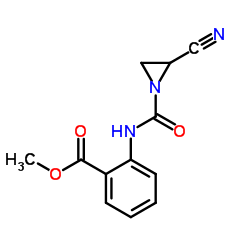Self-interaction is critical for Atg9 transport and function at the phagophore assembly site during autophagy.
Congcong He, Misuzu Baba, Yang Cao, Daniel J Klionsky
Index: Mol. Biol. Cell 19(12) , 5506-16, (2008)
Full Text: HTML
Abstract
Autophagy is the degradation of a cell's own components within lysosomes (or the analogous yeast vacuole), and its malfunction contributes to a variety of human diseases. Atg9 is the sole integral membrane protein required in formation of the initial sequestering compartment, the phagophore, and is proposed to play a key role in membrane transport; the phagophore presumably expands by vesicular addition to form a complete autophagosome. It is not clear through what mechanism Atg9 functions at the phagophore assembly site (PAS). Here we report that Atg9 molecules self-associate independently of other known autophagy proteins in both nutrient-rich and starvation conditions. Mutational analyses reveal that self-interaction is critical for anterograde transport of Atg9 to the PAS. The ability of Atg9 to self-interact is required for both selective and nonselective autophagy at the step of phagophore expansion at the PAS. Our results support a model in which Atg9 multimerization facilitates membrane flow to the PAS for phagophore formation.
Related Compounds
| Structure | Name/CAS No. | Molecular Formula | Articles |
|---|---|---|---|
 |
Native Streptomyces griseus Aminopeptidase I
CAS:9031-94-1 |
C17H25N7O4.2[HCl] |
|
Lack of involvement of CEP adducts in TLR activation and in ...
2014-01-01 [PLoS ONE 9(10) , e111472, (2014)] |
|
Human hAtg2A protein expressed in yeast is recruited to prea...
2011-01-01 [Acta Biochim. Pol. 58(3) , 365-74, (2011)] |
|
Yeast Mon2p is a highly conserved protein that functions in ...
2005-10-15 [J. Cell Sci. 118(Pt 20) , 4751-64, (2005)] |
|
Atg19p ubiquitination and the cytoplasm to vacuole trafficki...
2005-11-25 [J. Biol. Chem. 280(47) , 39067-76, (2005)] |
|
Yeast aminopeptidase I. Chemical composition and catalytic p...
1976-05-13 [Biochim. Biophys. Acta 429(3) , 933-49, (1976)] |